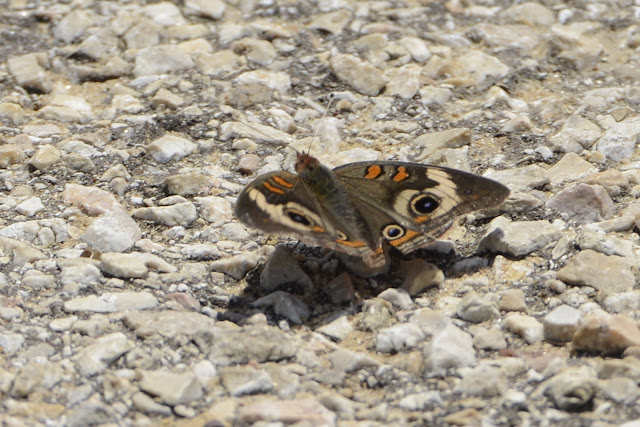Last year's results, according to the Natural History Museum of Los Angeles County website::
Last year over 20,000 observations were logged by over 1,000 citizen scientists, representing 1698 species in the Bay Area, and 1679 species in L.A. County!
This years results. I suspect a lot of people were like us, we did not really think of this as a competition (except, of course, we had to make sure and beat Houston) until the folks in San Francisco started to do some trash talking. San Francisco was well in the lead in terms of number of observations for the first few days of the Challenge.
The trash talking from the west coast got everyone fired up here. It seemed clear that many folks were checking the leaderboard frequently the last few days of the Challenge as the gap between DFW, which was in second place, and San Francisco began to shrink.
The results this year? The simple answer, according to the locals, is DFW is the winner. However, the results are more interesting than that. (Results are from the national organizers with my pink comments.)
All 16 cities together: 124,092 observations / 8557 species / 4051 participants
Wow!! Quite a showing for a very low-key event!
City with the most observations: Dallas/Fort Worth with 23,957 YEA!!
City with the most species found: Houston with 2419
City with the most participants: Los Angeles with 1034 (also includes people who submitted via social media)
City with highest percentage of verifiable observations: Dallas/Fort Worth with 96.3%
City with highest percentage of verifiable observations making it to Research Grade: Chicago with 64.4%
City that added the most new species to their region through the City Nature Challenge: Houston with 594 new species
City that added the most new iNaturalist participants to their region through the City Nature Challenge: Los Angeles with 436 new observers
There were 3077 new species that had not previously been recorded on iNaturalist in these 16 cities, and 5689 (I copied this number from their results, but it doesn't seem like it could be correct.) new iNaturalist observers who had not previously made observations in these 16 cities!
Most Common DFW Observations. I thought the more interesting thing was the list of most frequent observations locally. Far and away the most observed species locally were Pinklady flowers and Common Buckeye butterflies.
I guess Pinkladies being #1 is not totally surprising since they seem to be everywhere right now.
 |
| Pinkladies, a species of evening primrose, along City Trail in Highland Village. Note the bug on the center flower. |
We even saw a white pinklady.
 |
| A white Pinklady at least according to the iNaturalist community, along the Bittern Marsh Trail |
We saw Common Buckeyes on multiple occasions.
 |
| Common Buckeye in the parking lot at LLELA |
 |
| My favorite Common Buckeye picture |
The top DFW observations:
- Pinkladies, 175 observations
- Common Buckeye, 171
- Antelope Horns, 149
- Honey Bee, 149
- Dakota mock vervain, 136
- Mallard, 135
- Northern Cardinal, 134
- Fox Squirrel, 133
- Eastern Pondhawk, 125
- Poison Ivy, 113
- Great Blue Heron, 106
- Common Whitetail, 103
- Green Anole, 100
- Question Mark, 100
- Pond Slider, 99
- Green Antelopehorns, 95
- Texas Bluebonnet, 94
- Japanese honeysuckle, 88
- Gray Hairstreak butterfly, 82
- Virginia Creeper, 79
- Indian Blanket, 77
- Large Milkeweed Bug, 76
- American Coote, 71
- Seven-spotted Ladybird, 71
- Blue Dasher dragonfly, 71
- Asian Lady Beetle, 69
- Straggler Daisy, 65
- Great Egret, 65
- Hackberry Emperor, 63
- Mourning Dove, 61
- #3, Antelope Horns (This is a type of milkweed. We probably saw these but did not list them as a separate observation from green antelopehorns, #16, which we did have.)
- #19, Gray Hairstreak butterfly
- #25 Blue Dasher dragonfly (Actually I think we did see these, but we did not get a picture because they would not sit still.)
- #26 Asian Lady Beetles (Thank goodness we did not see these. They are a nasty invasive species that masquerades as the normal common ladybug.)
- #27, Straggler Daisy (We saw lots of different daisies, but I got confused as to what was what. I need to learn more about plants in general and some of the wildflowers in particular.)
Most Common Observations in other Cities. Of course, the most common observations in some of the other cities were different. The results for all 16 cities (including the top 100, I think, species for each city) are currently accessible from the National History Museum of Los Angeles website, but you have to click down through to see everything and you may need to be logged into iNaturalist.org. Here are the top observations for a few more cities.
- San Francicso: California poppy, 185; miner's lettuce, 130; Western Blue-eyed grass, 129
- Los Angeles: Western fence lizard, 364; fox squirrel, 211; honey bee, 191
- Austin: Indian blanket, 94; Texas bluebonnet, 69; poison ivy, 64
- Houston: Pinkladies, 122; Indian blanket, 74; Green anole, 65
What happens next year? I am not sure, but more cities are to be added to make it an international competition. I just hope iNaturalist gets enough bandwidth by then.

















































